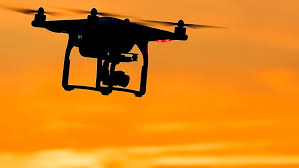Abstract
During free fall, it is difficult to land together with your team at the Designated Impact Point (DIP). A drone could act as a freefall guidance system from the High Altitude Release Point (HARP) to the DIP.
Problem Statement
During free fall, it is difficult to land together with your team at the Designated Impact Point (DIP). It is typically done by an experienced leader who takes point while the rest of the team tries to mimic how he falls. There is a lot of human error in this because the human cannot on the spot calculate their altitude, the wind conditions, their velocity, and the correct point in time to deploy the parachute in order to allow them to hit their DIP on time and together. How could these conditions be satisfied?
Proposal
A drone could be launched when the team drops with the preplanned DIP coordinates coordinates and based on altitude, weather, time, among other variables, the drone could act as the point man and guide the team to the (HARP) and then to the DIP.
Challenges and Unknowns
Range
Security
Control
Real Time calculations of altitude and changes in weather conditions and how to respond to those
AI

 OUSD Research and Engineering
OUSD Research and Engineering  West Point
West Point
Comments
tommy.sebastian | 16 February 2021
Interesting concept, and…
Interesting concept, and makes one of the usual challenges of UAV design - endurance - less of a concern. Even range is relaxed a bit. Seems to me the ability to address winds aloft, have some sort of visual/RF cueing for the team to track, reliable nav, and be truly attritable, would be key drivers. Would be nice if the drone could also be used after landing, but might lead to feature creep. On the other end of the design spectrum, a truly disposable drone using COTS hardware could solve the problem.